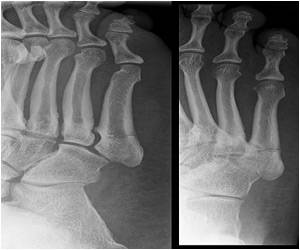
‘The finding also contradicts the long-held belief that ketamine works solely by blocking a cellular receptor called the NMDA receptor.’
Tweet it Now
Now, researchers led by Mark Rasenick, distinguished professor of physiology and psychiatry in the University of Illinois at Chicago College of Medicine, describe the molecular mechanisms behind ketamine's ability to squash depression and keep it at bay.Two-thirds of participants in clinical studies who did not respond to traditional antidepressants experienced fast and lasting resolution of their depressive symptoms after being given ketamine intravenously, Rasenick explained. The effects of ketamine typically lasted about a week -- much longer than would be expected with ketamine's six-hour half-life in the body.
Rasenick and his colleagues used a cellular model system to investigate how ketamine acted.
In previous research, Rasenick and his colleagues showed that SSRIs -- the most commonly prescribed class of antidepressants, which includes Prozac and Zoloft -- work in the brain by moving molecules called G proteins off of "lipid rafts" on the cell membrane, where the G proteins are held inactive. G proteins produce cyclic AMP, which nerve cells need to signal properly. People with depression, Rasenick found, tend to have a greater proportion of their G proteins packed into these membrane patches, along with dampened brain cell signaling, which may contribute to symptoms of depression, including a feeling of overall numbness.
In the earlier research, when Rasenick exposed rat brain cells to SSRIs, the drug accumulated in the lipid rafts, and G proteins moved out of the rafts. The movement was gradual, over the span of several days, which Rasenick thinks is the reason why SSRIs and most other antidepressants can take a long time to begin working.
Advertisement
The finding contradicts the long-held idea that ketamine works solely by blocking a cellular receptor called the NMDA receptor, which sits on the surface of nerve cells and helps transmit signals.
Advertisement
"When G proteins move out of the lipid rafts, it allows for better communication among brain cells, which is known to help alleviate some of the symptoms of depression," Rasenick said. "Whether they are moved out by traditional antidepressants or ketamine, it doesn't matter, although, with ketamine, the G proteins are very slow to move back into the lipid rafts, which would explain the effects of the long-term drug on depressive symptoms."
"This further illustrates that the movement of G proteins out of lipid rafts is a true biomarker of the efficacy of antidepressants, regardless of how they work," Rasenick explained. "It confirms that our cell model is a useful tool for showing the effect of potential new antidepressant drug candidates on the movement of G proteins and the possible efficacy of these drugs in treating depression."
Source-Eurekalert















